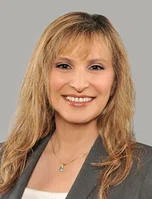Making a case for Arab American Studies
Equity Corner by Nora Hourani-Farraj
April 15, 2024

Marhaba! Hello! April is National Arab American Heritage Month, dedicated to recognizing Arab American contributions since the 1880s. While the initiative to include this month began in 2017, it was not until 2021 that the month was officially recognized by the U.S. State Department, Congress and President Biden. Unfortunately, it is not uncommon nor surprising that less than 5 percent of educators or school institutions celebrate or even know that Arab American Heritage Month exists. This is in relation to how census data is collected for Arab Americans in the United States.
Arab Americans come from countries that are members of the League of Arab States, that are divided into three regions: the Levant, the Gulf and the Maghreb. The Levant is comprised of Iraq, Syria, Lebanon, Jordan and Palestine. The Gulf countries are Saudi Arabia, Kuwait, United Arab Emirates, Oman, Bahrain, Qatar and Yemen. The Maghreb includes Egypt, Morocco, Algeria, Tunisia, Libya, Mauritania, Somalia, Sudan, Djibouti and Comoros Islands. Arabic is the official national language of these Arab countries of the Southwest North African region that extends from the Atlantic Ocean to the Persian Gulf. There are currently 3.7 million Arab Americans who reside in New York, Michigan, California, Florida and Texas, but it is difficult to discern if the numbers are higher in other states as there is no data disaggregation. For decades, Arab Americans have been forced to self-identify as White according to the U.S. Census. Each Arab American’s identity is ethnically robbed by not being able to claim their mother country. Many Afro-Arabs (Arabs of North African region) self-identify as African American since they do not perceive themselves as White.
Years of undercounting have deprived Arab Americans of access to basic services. In addition, since federal funding for research is awarded based on population data and Arab Americans are lumped with White data indicators, there is no medical or health-related data collection for them. There are also no opportunities for patient-centered care since there is no medical research funding to help bridge the gap of health disparities that are predominant in communities in which Arab Americans reside.
Besides basic health care services, Arab American students do not qualify for educational programs such as internships and scholarships meant specifically for students of color. According to federal agencies awarding stipends and other monetary contributions, Arab Americans are not considered an underrepresented minority. In addition to the U.S. Census, educators and school institutions do not have any disaggregated data on their Arab American students, staff, faculty and families. Since Arab Americans are unable to choose a more appropriate race and ethnic box, schools are also unable to determine how many Arab American students they have, as many Arab Americans or Americans of Arab descent will not choose Arabic as their native language on home language surveys. This missing information then becomes a challenge to providing the appropriate support and services. Arab Americans, thus, have become the invisible minority as educational institutions cannot identify the number nor percentage of Arab Americans within their district/school community.
While Arab Americans are invisible as an underrepresented community, Arab Americans are made visible through monolithic stereotyping, scapegoating, marginalization and prejudice that have negatively affected the intercultural relations within the U.S. educational system. Moreover, social and cultural conditioning of the Arab American stereotype has allowed patriotism to include anti-Arab perceptions, racial slurs and dehumanization, while stumping the credence of their rich linguistic, cultural and ethnic backgrounds. This biased and unchallenged misinformation has been perpetuated by the American media that has vilified Arab Americans in all facets of entertainment including movies, books, video games, TV shows, music, news outlets and social media. They are underrepresented in media occupations such as journalists, writers and producers, etc., allowing characters and protagonists to be portrayed within an Orientalism lens, oftentimes being reduced to caricatures and simplistic tropes that lack empathy, rationalism or understanding.
ADVERTISEMENT
While the state of California does not have accurate data on Arab American students, one can assume that there are Arab American students within the 20 percent of White students in the state. As students need to see themselves in the curriculum, it is necessary for Arab American voices and the positive contributions that Arab Americans have interwoven within the fabric of America to be included in our educational curriculum. These contributions also include economic growth from entrepreneurship, science and technological advancements such as medical imaging, literary and cultural enrichment through rich historical narratives and music, advocacy and civil rights for social justice and political empowerment, advancing intellectual inquiry and knowledge in academia and education, and enriching the culinary landscape of American cuisine and hospitality.
Educators and their institutions who advocate for social justice, access, diversity and equity are tasked with addressing historical and contemporary injustices faced by their Arab American students by challenging these stereotypes and misconceptions and helping to foster critical thinking skills. By including Arab American studies in their educational institutions, schools can raise the voices of their neglected, invisible minority and help highlight the rich diversity of their faiths, strong family and community values, hospitality, and their contributions in all facets of American life. By confronting and challenging biases through literature, curricular materials, news stories, artwork, musical pieces, etc., schools can foster an authentic, equitable learning environment where “all means all.” Yallah! (Let’s go.)
To help increase awareness and mutual understanding of Arab Americans, here are some resources:
- linktr.ee/dr.nora_hfarraj
- www.araborganizing.org/page/arab-american-heritage-month
Nora Hourani-Farraj is director of Community Relations, Chaffey Joint Union High School District, and equity representative for an ACSA charter.
FYI
ACSA is working to connect administrators of Arab American descent. If you would like to be a member of this network, please contact Tracie Noriega, senior director of DEI and Professional Learning, at tnoriega@acsa.org.




